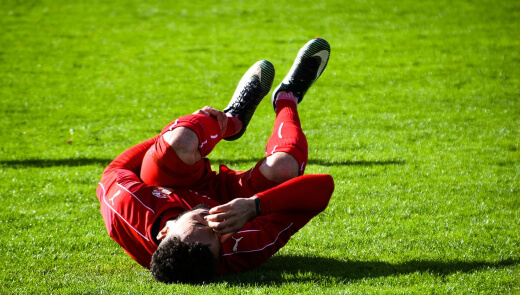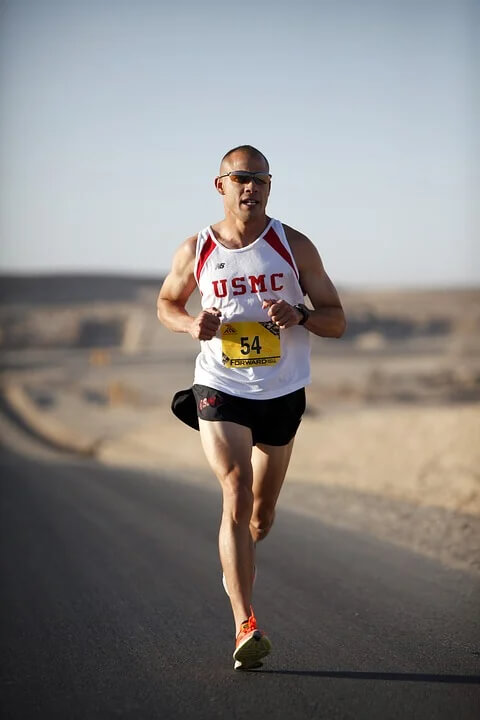What are Shin Splints?
Shin splints from running are common. Athletes and those participating in fitness programs are also susceptible to the condition. It is painful and can cause a throbbing or aching sensation.
The medical name for shin splints is medial tibial stress syndrome. The shin bone is the large bone located in the front of your lower leg. It occur when the connective tissue that attaches the bone to the muscle experiences stress and becomes inflamed.
Intense workouts and changes in training routines can overwork the muscles, connective tissue and tendons. This leads to the damage and pain referred to as shin splints.

What Causes Shin Splints?
Shin splints occur when the bone tissue and leg muscle are overworked and experience stress. Intense workouts, changes in physical activity, and repetitive stress can cause it. Even though anyone can experience shin splints, some people have a higher risk of developing the condition.
Shin Splints Causes:
- Running
- Increase in intensity of the workout
- Exercising more frequently
- Flat feet
- Rigid arches
- Dancing
- Military training
- Improper footwear
- Not warming up or cooling down
- Weak ankles
- Hip weakness
- Poor core strength
- Standing for long periods of time
Shin Splints Symptoms to Look Out For
Shin splints cause pain in the lower leg. The pain can be mild or severe.
The pain:
- Is in the lower part of the leg near or on the shin bone.
- Can be dull or sharp.
- Can come and go.
- Gets worse after exercising.
- Is worse when standing on toes.
Other Symptoms:
- Lower leg is tender to the touch.
- Mild swelling
- Continuous shin pain when walking.
- Shins hurt when running.

If the pain is continuous, see your doctor. They will determine if the pain is caused by something more severe. Leaving a shin splint go untreated can cause it to progress into a stress injury.
Shin Splints Treatment
Shin splints can often be treated at home. If the pain is persistent, you may need to see your doctor. They will perform a physical exam and possibly take x-rays and bone scans.
There is no cure. However, there are things that you can do to get rid of shin splints.
What you can do:
Rest
Give your body time to heal. Continuing to put stress on the shin will prolong the pain and cause more damage.
Anti-inflammatory Painkillers
The use of non-steroidal anti-inflammatory drugs can ease the pain and reduce swelling.
Ice
Apply ice to the area for 20 to 30 minutes. Ice can be applied every 3 to 4 hours.
Insoles or Orthotics
Insoles and orthotics provide the support that will assist in alleviating the pain. They will also help to prevent future shin splints.
Exercises You Can Do
Performing shin stretching and exercising can help prevent shin splints. There are several exercises that you can do to strengthen your calf and shin muscles.
- Bent knee ankle dorsiflexion and calf stretch
- Straight knee calf wall stretch
- Bent knee calf wall stretch
- Wall toe raises
- Foot step holds
- Toe walking
- Seated ankle dorsiflexion and calf stretch
- Standing ankle dorsiflexion stretch
- Heel walking
- Lying shin stretch
- Heel drop
- Point and Flex
- Single-legged Bridge

Shin Splints Prevention
Shin splints can often be prevented by following these simple tips:
Wear the Right Shoes
Purchase the proper shoes that fit your specific foot pattern. Replace your shoes when needed. For runners, this will be around 350 to 500 miles.
Shock Absorbing Insoles
Insoles provide extra support and cushioning that will help prevent shin splints.
Arch Supports
Arch supports will provide support across your arch. If you choose to use arch supports, it is important that they fit your feet precisely. Arch supports are often recommended for people with flat feet.
Do Not Overdo It
Slowly and gradually build your fitness level. Over time, increase the frequency, duration and intensity. If you experience shin pain when running, take a break. Give your legs a few days to rest.
Participate in Low Impact Exercise
Participate in low impact exercises that do not put as much stress on the shins. Examples of low impact activities include cycling, swimming, walking and elliptical.
Strength Training
By adding strength training you can help to strengthen your hips, legs and ankles.
Keep a Healthy Weight
Being overweight adds extra stress to your legs.
Warm Up Before Exercising
Warming up before exercising will slowly heat your body and loosen joints and muscles.
Cool Down After Exercising
Cooling down will slowly cool down your body and reduce stiffness and muscle cramping.
Exercise on Soft Surfaces
Hard surfaces raise the amount of force your bones and muscles must absorb. When you exercise on a softer surface, the surface will absorb some of the force.
Have Your Movements Analysed
Our exercise physiologists can help improve the way you move. They will observe your movements and muscle strength. This information will be used to customize your program. They will teach you how to properly stretch and strengthen your muscles.
Physical Therapy
If you experience shin splints on a recurring basis, you should consider shin splint physical therapy. Exercise rehabilitation is an important part of the recovery process. Physical therapy is the best treatment for shin splints.
It will help you recover quicker while preventing additional injuries. It will help to restore a full range of motion and reduce pain. Our professional exercise Physiologists will work with you and provide you with a personalized plan that will help you successfully heal from shin splints.
Physical Therapy will:
- Increase flexibility
- Boost endurance
- Reduce stress
- Reduce fatigue
- Improve muscle strength
- Improve mental health
- Prevent future injuries and re-injury
- Reduce pain
- Improve balance
- Quicker recovery
- Boost energy
- Increase self-confidence

Start Getting Relief Today
Our Exercise Physiologists are accredited and recognised with Exercise and Sport Science Australia (ESSA). They are experts in their field and excel in exercise rehabilitation.
Exercise Physiologists can create a personalised physical therapy plan based on your assessment. Our program will teach you how to treat shin splints. It will be aimed at relieving current shin splint symptoms and preventing future episodes.
